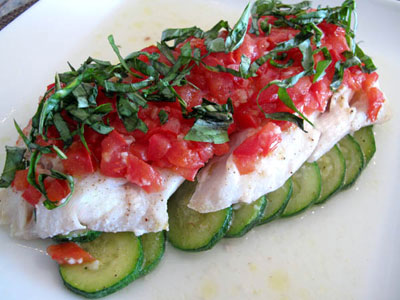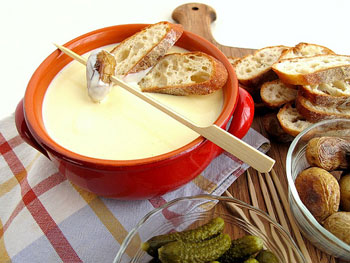 I had a cooking breakthrough this past week that I want to share with you. Because Jill is eating more and more veganly and handling a lot of her own shopping and preparation, I end up cooking a lot of dishes for myself. And I’m finding this has liberated me in a number of ways.
I had a cooking breakthrough this past week that I want to share with you. Because Jill is eating more and more veganly and handling a lot of her own shopping and preparation, I end up cooking a lot of dishes for myself. And I’m finding this has liberated me in a number of ways.
Instead of measuring or checking the recipe for amounts, I just say to myself, “How much of that do I feel like today?” And I throw in just that much.
Without having to worry about this person’s salt problem, that person’s meat problem, this person’s wheat allergy, that person’s fat phobia – my dishes are turning out just the way I like them.
A recent carbonara is a perfect example: Carbonara is an emotional dish – it’s bacon and eggs, on pasta, with cheese, with lots of black pepper.
One theory is that the name “carbonara,” which means, “in the style of the coal-workers” really comes from the fact that the black pepper scattered on top looks like coal dust. I’m going with that theory. I think a lot of pepper makes this dish.
Allora.

 Traditionally this fish would be cooked in parchment paper, and opened at the table (See NY Times article: "
Traditionally this fish would be cooked in parchment paper, and opened at the table (See NY Times article: " The day after Easter I always find myself with a huge pot of leftover ham stock. In my family we traditionally eat boiled ham and eggs for the holiday. It's a very simple meal that I look forward to every year. I love hard-boiled eggs, so Easter has always been a favorite time of year, because I get to eat all the foods I love, including chocolate. But what to do with all the leftover ham stock? My mom typically makes ham and bean soup, but in the past few years I've started my own tradition of making ham and split pea soup.
The day after Easter I always find myself with a huge pot of leftover ham stock. In my family we traditionally eat boiled ham and eggs for the holiday. It's a very simple meal that I look forward to every year. I love hard-boiled eggs, so Easter has always been a favorite time of year, because I get to eat all the foods I love, including chocolate. But what to do with all the leftover ham stock? My mom typically makes ham and bean soup, but in the past few years I've started my own tradition of making ham and split pea soup. With the blustery weather the Northern hemisphere is having right now, there are plenty of reasons to stay in and gather with family over holiday food. And for safety's sake, I just hope that is what most people are doing. There are many dishes that create a sense of togetherness, but none is as famous as fondue. This dish of melted cheese originates from the Alps. The Swiss popularized and designated it a national dish in the 1930s. It eventually crossed the pond and became extremely popular in suburban America during the 1960s. There are also French and Italian versions, like Fonduta, as it's called in Italy.
With the blustery weather the Northern hemisphere is having right now, there are plenty of reasons to stay in and gather with family over holiday food. And for safety's sake, I just hope that is what most people are doing. There are many dishes that create a sense of togetherness, but none is as famous as fondue. This dish of melted cheese originates from the Alps. The Swiss popularized and designated it a national dish in the 1930s. It eventually crossed the pond and became extremely popular in suburban America during the 1960s. There are also French and Italian versions, like Fonduta, as it's called in Italy.
